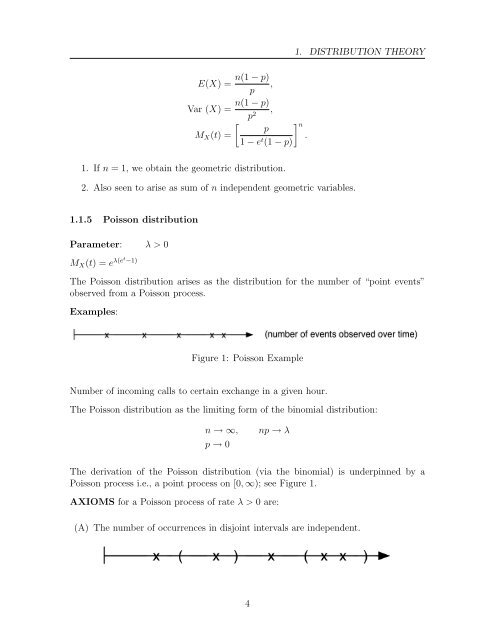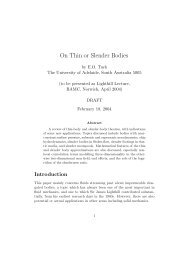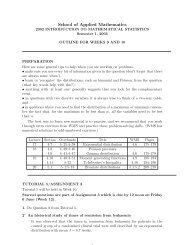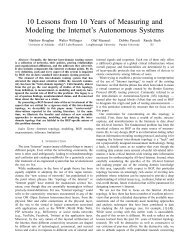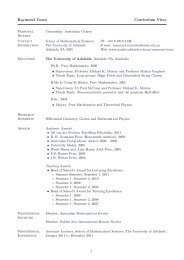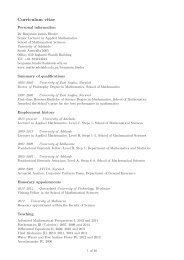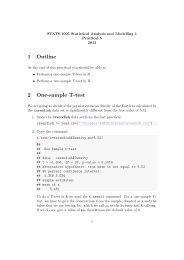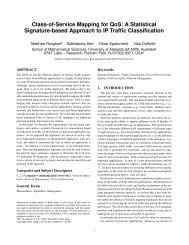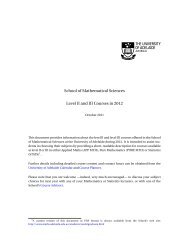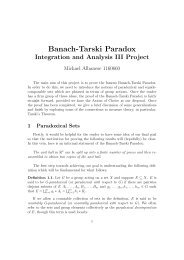PDF of Lecture Notes - School of Mathematical Sciences
PDF of Lecture Notes - School of Mathematical Sciences
PDF of Lecture Notes - School of Mathematical Sciences
Create successful ePaper yourself
Turn your PDF publications into a flip-book with our unique Google optimized e-Paper software.
n(1 − p)<br />
E(X) = ,<br />
p<br />
n(1 − p)<br />
Var (X) = ,<br />
p<br />
[<br />
2 ] n<br />
p<br />
M X (t) =<br />
.<br />
1 − e t (1 − p)<br />
1. If n = 1, we obtain the geometric distribution.<br />
2. Also seen to arise as sum <strong>of</strong> n independent geometric variables.<br />
1. DISTRIBUTION THEORY<br />
1.1.5 Poisson distribution<br />
Parameter: λ > 0<br />
M X (t) = e λ(et −1)<br />
The Poisson distribution arises as the distribution for the number <strong>of</strong> “point events”<br />
observed from a Poisson process.<br />
Examples:<br />
Figure 1: Poisson Example<br />
Number <strong>of</strong> incoming calls to certain exchange in a given hour.<br />
The Poisson distribution as the limiting form <strong>of</strong> the binomial distribution:<br />
n → ∞,<br />
p → 0<br />
np → λ<br />
The derivation <strong>of</strong> the Poisson distribution (via the binomial) is underpinned by a<br />
Poisson process i.e., a point process on [0, ∞); see Figure 1.<br />
AXIOMS for a Poisson process <strong>of</strong> rate λ > 0 are:<br />
(A) The number <strong>of</strong> occurrences in disjoint intervals are independent.<br />
4


